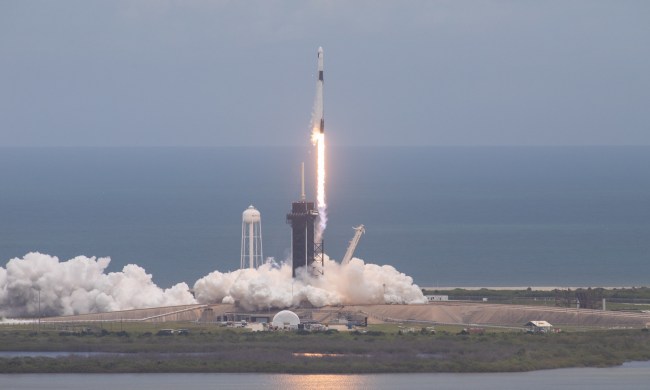
Earlier in 2017, the state-funded Russian Foundation for Advanced Research Projects unveiled the anthropomorphous robot known as FEDOR — an acronym for Final Experimental Demonstration Object Research. If that name seems simultaneously ominous and terrifying, you should check out FEDOR’s death skills highlight reel. In demonstrations, FEDOR has the ability to blast bullets via dual pistols, perform army crawls, drive a car, and even make time to pump a little iron in pure Vladimir Putin fashion.
Russian Deputy Prime Minister and Deputy Head of the Military-Industrial Commission Dmitry Rogozin later tweeted: “Robot FEDOR showed the ability to shoot from both hands. Fine motor skills and decision-making algorithms are still being improved.”

The deputy later attempted to gloss things over via Facebook to let everyone know that the video was by no means a showing of overt aggression and instead simply a demonstration of the bot’s dexterity and the utilized decision-making algorithms. On Monday, November 20, Roscosmos, the Russian space agency, announced that FEDOR would be piloting the Federatsiya spacecraft into orbit in 2021. Eventually, Roscosmos plans to use the Federatsiya craft to carry astronauts to the moon and potentially one day to Mars.
Currently, the cyber cosmonaut is set to begin preliminary pilot training for the Federatsiya in 2020 and could join the International Space Station as soon as 2024, according to project director Sergei Hurs. It’s still too early to tell how FEDOR will perform in the unforgiving vacuum of space but at the moment, the robot looks like a regular jack-of-all-trades.
“This thing can work without a space suit, live not only in a crew vehicle but even outside it,” explained Rogozin.
With this in mind, robots will inevitably one take our jobs and claim dominion over our planet but in the interim, at least there is now the potential for us to witness a robot pilot a spaceship and even potentially ghost ride the celestial whip en route to Mars.


